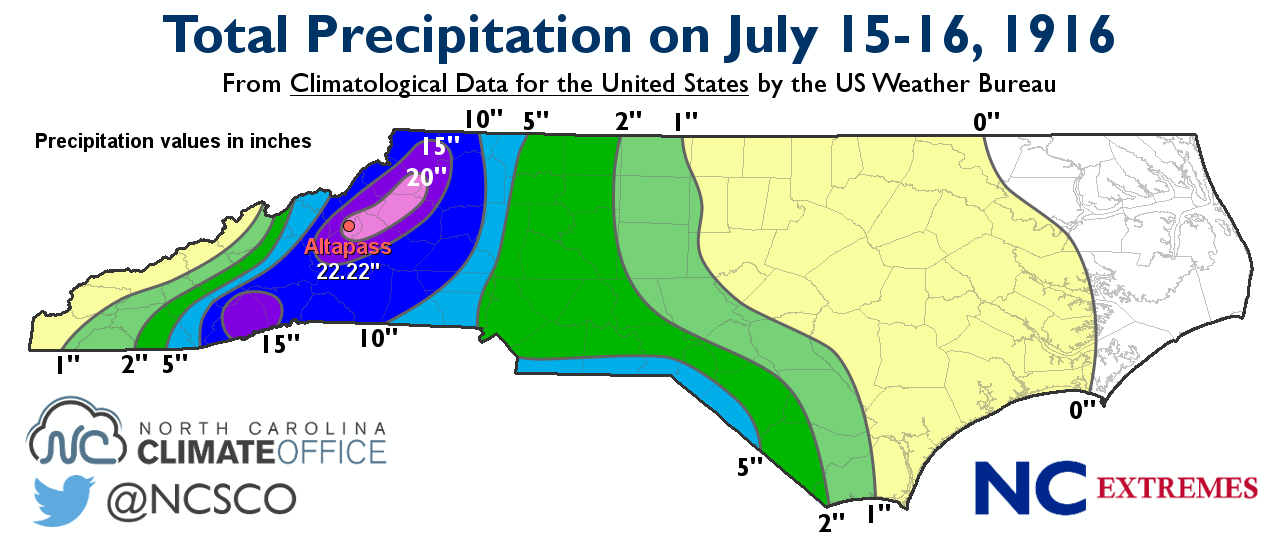THE GREAT FLOOD OF 1916
We’re coming up on the 100 year anniversary of the biggest natural disaster to hit western North Carolina in recorded history. The flood of 1916 brought widespread destruction to the area. It is still talked about by the “old timers” with a sense of awe as the biggest and most consequential event in the communal memory of the area.

Transport yourself back a hundred years. World War I is still raging. It really hasn’t been that long since the end of the Civil War. The economy of the South is still recovering. A lot of men are in the army, and the hills of western North Carolina are bare from unregulated clear cutting. Railroads are a major form of transportation. Streetcars transport people through Asheville. And it has been raining a lot this summer, of 1916.
The ground is already saturated from the rain when a category 3 hurricane hits the Gulf Coast of Alabama and Florida. A few days later, on July 7 and 8, the weakened storm drops heavy rainfall over the region. The rains continue from July 9 to July 14. On July 14 a category 2 hurricane makes landfall along the South Carolina coast near Charleston. On July 15 and 16 this storm reaches western North Carolina. The area has now seen 10 days straight of rain. In Henderson County ten inches of rain fall in less then 24 hours. The National Weather Bureau recorded 22.22 inches of rainfall in one day at Altapass near Grandfather Mountain. At this time it is the greatest 24-hour precipitation total ever recorded in the United States.
The French Broad River crests at an estimated 21 feet. That’s 17 feet above flood stage. The average width of the river near Asheville is 381 feet in 1916. During the flood the width grows to approximately 1300 feet.
The blaring of textile mill whistles, the ringing of fire bells, and the ringing of church bells wake those not already alerted by the thunderous roar of landslides and the rushing torrents of flood waters. Only one telegraph office in Asheville is working. One message reads:
“Asheville and Biltmore are flooded. The water is up to the ceiling in the depot. It is six feet deep in Dr. Elias’ house in Biltmore. It is in All Soul’s church—it is in the hospital—the beds are floating—the patients are drowning! The tannery is washed away—bridges are gone. Captain Lipe and some of the nurses are drowned at Biltmore. Other people are up in trees, surrounded by water, and they cannot get them out of the river. The Swannanoa is a mile wide! Box cars are floating down the French Broad. All the dams at Hendersonville have broken.”
All the dams in the area break. Many bridges are destroyed. Miles and miles of rail are destroyed as they are often laid along river corridors. The total number of fatalities is unknown but it is estimated that at least 80 people died. The known deaths occur in the cities and towns. There are an unknowable number of fatalities in the secluded hills and hollers.
The federal government estimates the damage is $430,000,000 in 2007 dollars.
As a noted geologist once said:
“Floodwaters are never a one-time event. What was flooded once will eventually be flooded again.”
Hopefully improved forrest and flood-plain management will mitigate the effects of the next catastrophic flood and we won’t have stories to rival these ever again.
